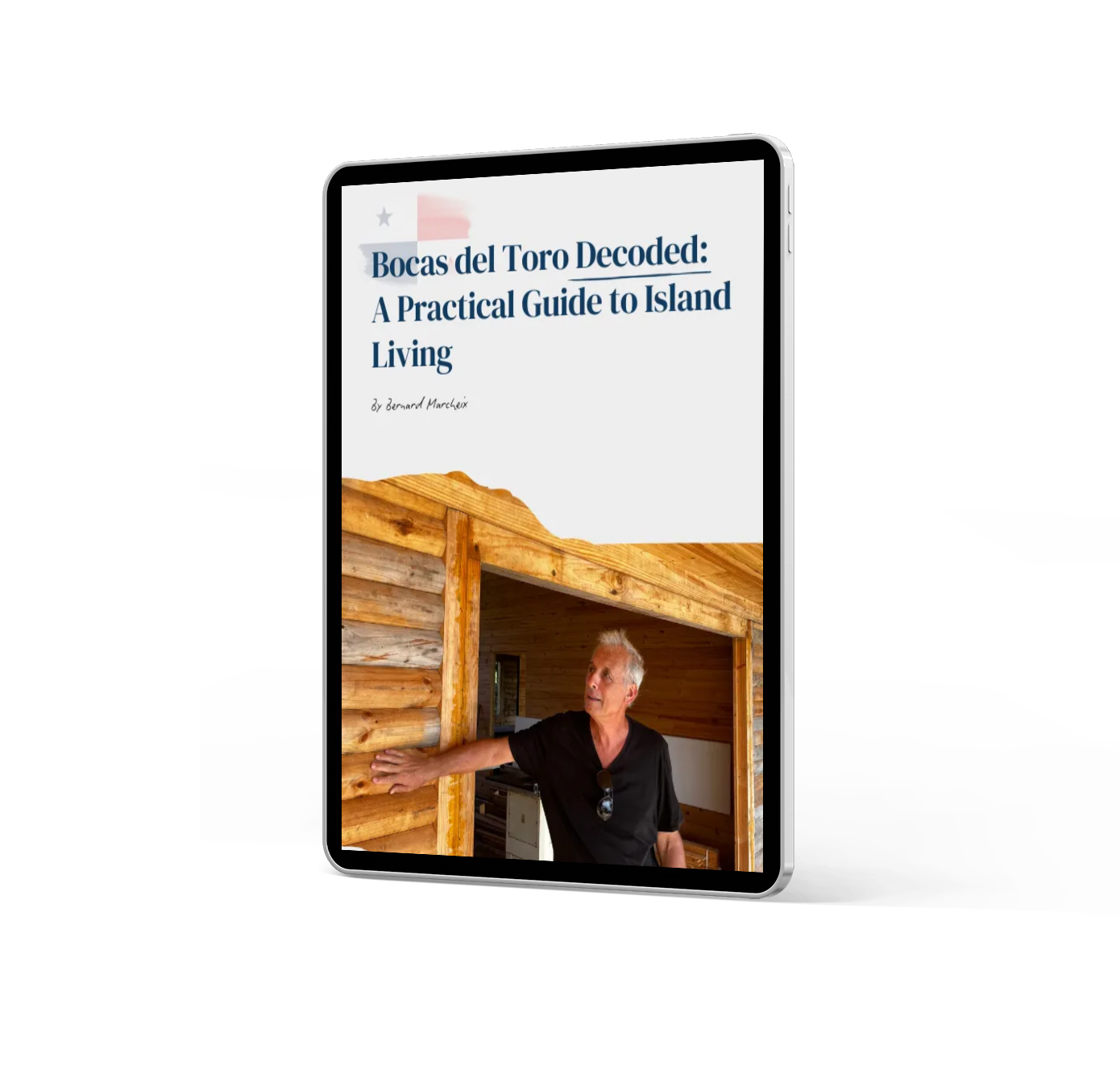From metal roofs to palm thatch, choosing the right covering for your home in Bocas del Toro is key for comfort and longevity. Learn about the pros and cons of different roofing materials, how to manage heat and noise, and essential tips for easy maintenance—whether you opt for cost-effective metal or eco-friendly palm.
If you don’t opt for surrounding terraces, at least establish generous overhangs of at least 1 meter to cover the walls somewhat, although the effect won’t be as effective as a covered terrace. Here in the archipelago, metal roofs are the most common choice for coverings because they are easy to install, very economical, and quick to use, available in various colors.
The downside of metal roofs is the noise when it rains and the heat they retain. Therefore, sound and thermal insulation can be wise considerations. It’s possible to include an opening at the ridge of the roof to create effective ventilation, allowing hot air to escape from the upper sections of the roof.
Keep in mind that tall buildings with two or three stories make it difficult to maintain high walls, overhangs, and gutters that need cleaning or repair. Moreover, it is not always easy to find professionals on the islands to perform these delicate tasks.
For roofing materials, there are also plastic tiles and, very occasionally on the islands, clay tiles. Shingle is another good product that is easy to install, aesthetically pleasing, resembling slate, and available in various colors, but it comes at a higher cost than metal.
Palm roof is an excellent choice from an aesthetic perspective, offering good thermal and sound insulation while being environmentally friendly. However, its lifespan can reach a maximum of about ten years, and dust, plant debris, insects, and bats can find suitable habitats within it. Additionally, palm roofs cannot collect rainwater, and they require steep slopes to prevent leaks.
A small reflection: palm roof, once the preferred and essential material for the local population, has become unaffordable for many locals due to rising prices associated with foreign demand. It is still used in some remote areas where it is available naturally, but metal has gradually replaced it. Synthetic palm, which looks very attractive, is a good compromise to natural palm, but its cost remains high.



